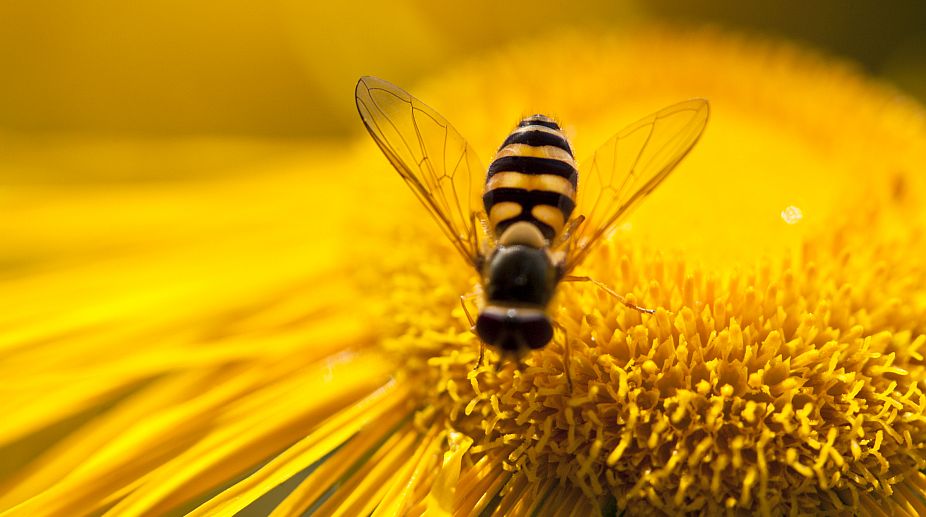Drone mapping to quickly detect pollution sources: Rai
Delhi Environment Minister Gopal Rai on Friday said that for the first time drones were used to identify and collect information on the sources of pollution at a hotspot zone.

(Photo: Getty Images)
Scientists have decoded how honeybees perceive colour, paving the way for drones and robots that can 'see' better, as well as more accurate smartphone cameras.
Identifying colour in complex outdoor environments is extremely difficult because the colour of light is continuously changing.
Researchers, including those from Monash University and University of Melbourne in Australia, looked to see how honeybees solve this problem and discovered a totally new mechanism for processing colour information.
Advertisement
“For a digital system like a camera or a robot the colour of objects often changes. Currently this problem is dealt with by assuming the world is, on average, grey,” said Adrian Dyer Associate Professor at RMIT University in Australia.
“This means it's difficult to identify the true colour of ripe fruit or mineral rich sands, limiting outdoor colour imaging solutions by drones, for example,” said Dyer.
Bees have three extra eyes (ocelli) on the top of their head that look directly at the sky, and researchers discovered that the ocelli contain two colour receptors that are perfectly tuned for sensing the colour of ambient light.
Bees also have two main compound eyes that directly sense flower colours from the environment.
“Physics suggests the ocelli sensing of the colour of light could allow a brain to discount the naturally coloured illumination which would otherwise confuse colour perception,” said Jair Garcia from RMIT.
“But for this to be true the information from the ocelli would have to be integrated with colours seen by the compound eyes,” said Garcia.
To test if this happened, researchers mapped the neural tracings from ocelli and showed neural projection did indeed feed to the key colour processing areas of the bee brain.
“We're using bio-inspired solutions from nature to tackle key problems in visual perception. This discovery on colour constancy can be implemented into imaging systems to enable accurate colour interpretation,” said Dyer.
“The discovery provides a superb solution to a classic problem and makes colour constancy computationally inexpensive,” said John Endler from Deakin University in Australia.
The research was published in the journal Proceedings of the National Academy of Sciences.
Advertisement